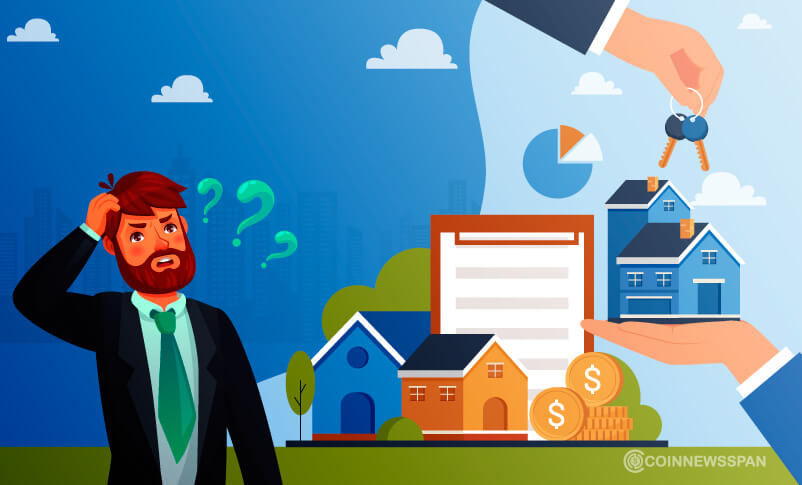Clueless about Mortgages? Here’s a quick-start guide on Finance Rates

Finance rates, commonly known as interest rates, are the costs to be paid for borrowing money and what creditors earn from borrowers. These finance rates today are flexible and change continually based on a slew of factors, from the state of the economy to an individual’s credit-worthiness.
There are two aspects to interest rates – Short Term and Long Term.
Short term interest rates are set by the Central Banks in countries that follow a centralized banking model. The government chalks out economic policies to keep inflation in check and ensure stability in liquidity and prices. In the U.S, the controlling body is the Federal Open Market Committee, consisting of the Federal Reserve Board governors and five Federal Reserve Board presidents. Reduction in interest rates encourages borrowings, while an increase leads to higher savings. The prime rate determined by the Federal authorities is the rate that banks charge their best customers with a high credit rating and is the base interest rate carrying between 3.25 and 3.50 percent.
Long term interest rates do not depend on the Federal funds rate but follow the 10 to 30 years’ fixed Treasury note yields. Low demand for the notes results in high-interest rates and vice versa. Long-term fixed-rate mortgage loans, one-time consumer credit loans, car loans, student loans, and similar borrowing types fall in this category.
What is a Mortgage and its Many Facets?
A mortgage is a loan that is designed for home buyers. Borrowers can set the period for paying back the loan at an agreed rate of interest. Part of the mortgage process is drawing up legal documents that allow the seller to reclaim the property if the buyer defaults on payments. Conversely, the documents also state that the seller has no right on the property if regular payments are made.
The house is the collateral for the loan, and hence, a mortgage is a fully-secured borrowing. The repayment is commonly spread over a 30 year period, though the borrower has the option of paying off within 15 year fixed or 20 years. The interest on mortgages is either fixed-rate or adjustable-rate. In the first instance, the interest rate does not change over the life of the loan, while in an adjustable-rate scenario, the interest rates fluctuate at set intervals.
How are Mortgage Rates Decided?
There are two aspects to determine the mortgage interest rate. One set depends on the borrower and the other on factors outside their control.
If you are buying a home with a loan, your credit rating will play a big part in deciding the interest rate, as it is a benchmark for the lenders to decide how risky the loan might be. The higher the risk, the more will be the interest rate. With a credit score of 740 or higher, you are likely to get the best mortgage rate. The other is the loan amount against the house or property’s value ratio. The higher your down payment, the lower will be this ratio, and the less will be the interest rate.
There is another set that is not in your control and decided entirely by market forces. The mortgage rates fluctuate based on the overall state of the economy, the rate of inflation, and the rate of unemployment.Interest chargeable is high when these economic indices are on a downswing.
The Difference between Interest Rate and Annual Percentage Rate
The interest rate is simply the amount of interest you will pay as a borrower and does not include any charges or service fees. On the other hand, the annual percentage rate (APR) is the total cost of the loan and includes the interest rate and all administrative charges. Lenders have rights reserved to levy these charges based on administrative costs of servicing the loan. Hence APR is a more accurate reflection of the total cost of a home loan.
Prevailing Interest Rate Today
The current mortgage interest rates are updated daily so that borrowers can get the latest rates when choosing a home loan. However, the annual percentage rate has no relation to interest rates, and the average rate is fixed on credit rating and single-family residence.
On Monday, September 28, 2020, Bankrate released a survey of the country’s largest mortgage lenders. The 30 year fixed interest rate has been pegged at 3.090% and the APR at 3.300%.The average of the 15 year fixed mortgage rate is 2.550%, and APR is 2.770%. The 5/1 ARM rate is 2.910% with an APR of 3.620%.The 10 year fixed is at 2.480% and APR at 2.610%.
Bankrate has been a trusted source for bank rates since 1976, when it was published as the “Bank Rate Monitor.” It has been collating the mortgage rate information from the top lenders in the country and publishing the data at periodical intervals. With this, home loan borrowers can then make a considered choice about the lender they want to approach.
3.25% – Is it the Magic 30 Year Mortgage Rate?
There is a lot of hype about 3.25% on a 30 year fixed mortgage rate. Provided your credit rating is high and you want to invest in discount rates to buy your interest rate at a low, the answer is a YES. If not, the 30 year fixed rate is moving between 3.5% and 4.25%. This variance has been the true face of the mortgage bond market that has been prevailing over the previous few weeks after this fixed-rate hit a record of 3.53 percent mid-July, 2012.
Here is a tip – if you are following 30 year fixed or even 15 year fixed mortgage rates on television or browsing sites on the Internet, you are bound to be misled on the rates. Bond markets are moving continuously on Wall Street, and once the latest rates existing today or NOW hits the media, it is already outdated, and the 30 year fixed rate as broadcast becomes history and will not help in locking in on the best-fixed rate.
But if you are still going after the elusive 3.25% 30 year fixed current mortgage rate, you have to get several things right to qualify. The property should be your primary residence, have a 60% loan to value ratio, a credit score of 780, loan under $417,000, high volume cash assets, and a faultless credit score. This is generally a Utopian level that is very difficult to achieve. But if you can crack this code, a 3.25% fixed rate can be yours for the asking.
Good Mortgage Rate – Get the Best Out of 4.25%
When you are looking at financial mortgage rates, remember, it is the singular most critical factor to save thousands of dollars over time if you can get it right. Even a half percentage point rise on a $250,000 mortgage over 30 years at 4.25% can save you $21,400 over the mortgage period than if the rates were 4.75% or above. Hence when you are browsing mortgage rates against the loan amount to determine the monthly payment, be proactive in researching the prevailing mortgage rates first.
Whether you are refinancing your current home or buying a new one and whether it is a 30 year or 15 year fixed loan tenure with a comfortable mortgage monthly repayment, get the basics right first. Ensure that you better your financial standing by building your credit score. It will bring down the interest rates substantially.
Save enough for a down payment to minimize the loan amount as much as possible and reduce the monthly payment. Figure out which mortgage rates work best for you, whether you can manage with a 15 year or 20 year repayment to quickly close the mortgage even if the monthly payment is higher. The mortgage rates can be had at 4.25% if you plan out the whole exercise well.
Finally, a mortgage will be the biggest financial decision of your life, and hence it is advisable to shop around for the best rates. Ensure that you check the mortgage rates offered by credit unions, local and regional banks, and national banks. You will find a variance in rates as the fees, the rates of mortgage, promotional discounts, and an existing banking relationship as of today all have a say in determining the final financial effect on your home loan.
What are today’s 30 year mortgage rates?
As on Monday, September 20, 2020, a survey of the country’s largest mortgage lenders shows that the 30 year mortgage rate is 3.090%, with the APR pegged at 3.300%. The average VA mortgage rates over the same period are 3.230% and an APR of 3.370%. The fixed FHA mortgage rates are 3.080% with an APR of 3.780%. Finally, the fixed jumbo rates are 31.120% and 3.200% of mortgage rates and APR, respectively.
What is today’s current interest rate?
The current interest rates are updated daily so that people looking for financial mortgage products are in the loop of the latest rates. But the APR has no link with the interest rate as it is solely dependent on factors that do not have a direct financial relevance such as the property being a single-family residence or not.
As of today, September 28, 2020, Bankrate released a survey of the country’s largest mortgage lenders. The 30 year fixed interest rate has been pegged at 3.090% and the APR at 3.300%.The average of the 15 year fixed mortgage rate is 2.550%, and APR is 2.770%. The 5/1 ARM rate is 2.910% with an APR of 3.620%.The 10 year fixed is at 2.480% and APR at 2.610%.
Is 3.25 a good mortgage rate?
By any yardstick, 3.25% is an excellent mortgage rate regardless of the loan amount. But there are many points to consider here. A 3.25% financial mortgage is possible only if you want to invest in discount rates to buy the interest at a low. Additionally, it would help if you had a very high credit rating in the region of 785. Without meeting these variables, and with the average loan amount and the monthly payment of 30 years, the interest rate will vary between 3.5 and 4.25%. Another way to get near this magic mark is to have a high loan to property ratio value.
Is 4.25 a good mortgage rate?
When you are looking at financial products, every half-percentage point counts too. 4.25% is a good mortgage rate considering that the usual average rate of 4.75% will mean a savings of $21,400 than 4.25% for a 30-year loan of $250,000. Regardless of whether you are looking for financial assistance for refinancing your old home or buying a new one, opting for a rate of 4.25% is undoubtedly a win-win situation.







